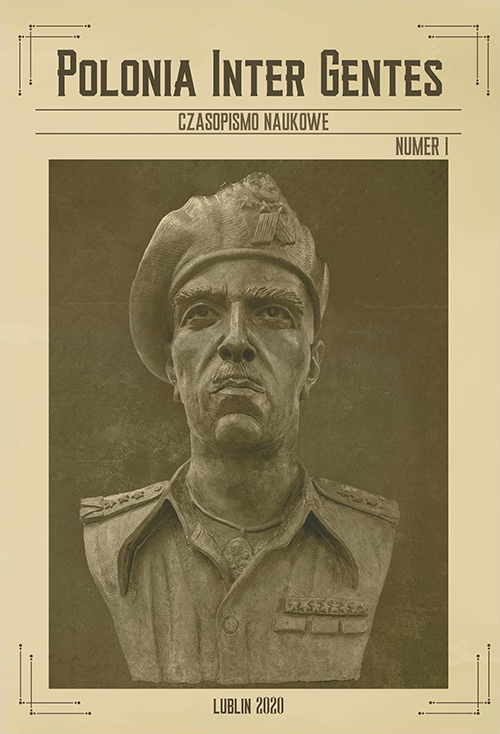
We kindly inform you that, as long as the subject affiliation of our 300.000+ articles is in progress, you might get unsufficient or no results on your third level or second level search. In this case, please broaden your search criteria.

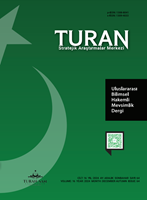
The aim of this research is to examine the piano practice methods of Fine Arts High School (FAHS) students. The research is a descriptive study based on a basic field study and follows a survey model. The relevant data were collected using the “Instrument Practice Methods Scale” developed by Küçükosmanoğlu, Babacan, Babacan, and Yüksel (2016). The study group consists of 213 students taking piano lessons in the 9th, 10th, 11th, and 12th grades during the 2022-2023 academic year at Samsun İlkadım, Ordu Penbe-İzzet Şahin, and Bolu Fine Arts High Schools. Based on the research findings, it was concluded that students taking piano lessons at FAHS applied piano practice methods to a great extent ( X = 3.56).
More...
Wolfgang Amadeus Mozart, one of the most important composers in the history of classical music, wrote works in almost all musical genres and managed to influence his contemporaries. The composer, who fit more than six hundred works into his thirty-five years of life, left his mark on the Classical Period. In this study, besides giving information about W. A. Mozart's life, musical understanding and works, K.218 No.4 Violin Concerto was analyzed in terms of form analysis, violin playing techniques and performance. In this study, it was aimed to contribute to a clear and beautiful interpretation of K.218 No.4 Violin Concerto. Descriptive method was used in the study. According to the findings obtained as a result of the research; this study is thought to be a guide for the interpretation of the work.
More...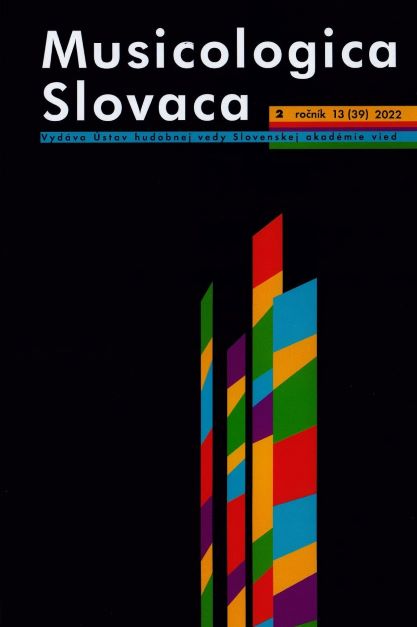
The most extensive collection of folk music recordings in Slovakia is situated at the Instituteof Musicology of the Slovak Academy of Sciences in Bratislava, in the Department forEthnomusicology. Its core consists of a historical collection of tape recordings from thesecond half of the twentieth century, acquired from all regions of Slovakia and from Slovakenclaves abroad. Today, it is a closed corpus comprising over three thousand five hundredtapes. For the most part, the sound recordings were made by the staff of the institute, whoperformed this documentation work as part of its long-term research projects. In terms oforigin, this internal collection includes two categories of recordings: originals and copies.Initially, the Sound Recordings Collection of Folk Music served scholarly purposes and wasused by the staff of the institute and their collaborators. Gradually, the collection has gainedhistorical value, and interest in it has recently increased not only among scholars but alsoamong the general public.
More...
Eva Szórádová: Das Aeolodikon des Pressburger Klavierbauers Karl Schmidt. Eisenstadt : Esterhazy Privatstiftung, 2023, 254 p. ISBN 978-3-9505368-2-9
More...
Jana Lengová (ed.): Výber zo slovenskej zborovej tvorby (1860 – 1918). I. Miešané zbory. Bratislava : Ústav hudobnej vedy SAV, v. v. i., 2023, 128 p. ISBN 978-80-89135-55-4
More...
Michal Ščepán: Tadeáš Salva. Život a dielo. Bratislava : Ústav hudobnej vedy Slovenskej akadémie vied, 2020, 248 p. ISBN 978-80-89135-47-9
More...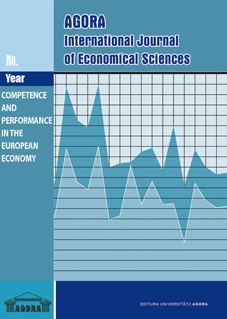
The study examines the significance of sustainability among festival attendees (N = 3,503), revealing that a substantial majority of 90.4% do not consider it a primary factor in their festival experience. The analysis highlights demographic influences, indicating that factors such as age, gender, and educational background have minimal impact on the perceived importance of sustainability. The paper synthesizes these findings, concluding that sustainability is not a central aspect of the festival experience for most visitors. Why is this the case? The answer lies in a key aspect of the experience that guests seek at festivals: escapism. The study suggests that traditional approaches, such as strict regulations on non-sustainable practices, may be counterproductive. Instead, it advocates for the development of innovative nudging strategies that promote sustainable behaviors while preserving the escapist nature of festivals. By fostering a culture of engagement rather than prohibition, event organizers can enhance the integration of sustainability into the festival experience, ultimately encouraging more responsible participation among attendees.
More...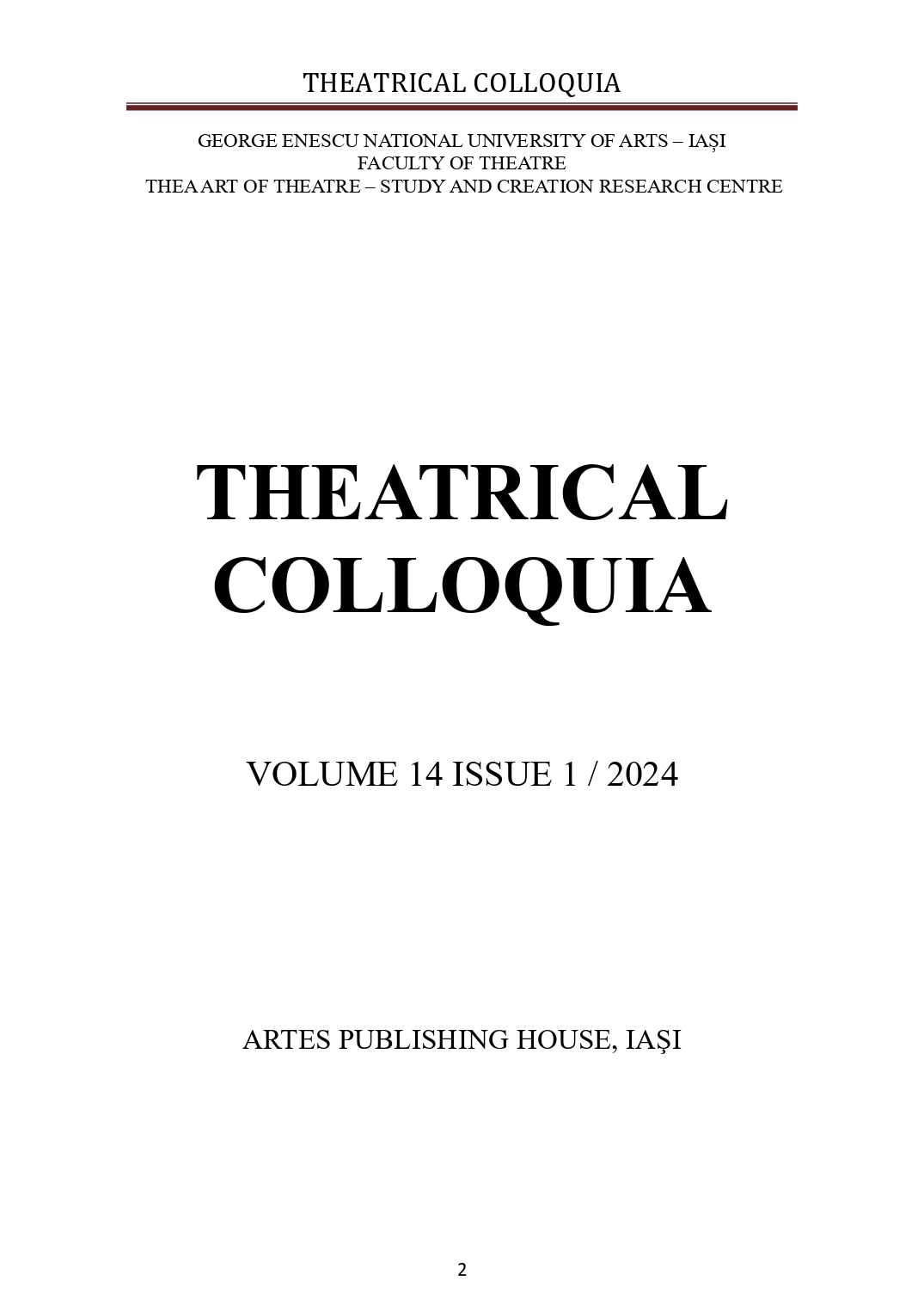
Operetta is a musical and dramatic performance similar to, yet shorter than opera, composed to a dramatic libretto with humorous elements. It is a complex production engaging the viewer in an appealing visual and audible experience marked by a harmonious blend of movement, colour and form. From a choreographic perpective, operetta brings a particular approach in that nearly the entire performance consists of planned dance sequences or ample parts of scenic movement. The research topic is the ball organised by Prince Orlofsky of Die Fledermaus (The Bat) operetta by Johann Strauss – The Son, a part of Act II, staged by Matteo Mazzoni, choreographed by Roxana Colceag and acted out by Victor Bucur. The wide range of sequences of dance steps in an operetta performance is due to the themes of such performances which allow and even impose the existence of choreographic moments, on the one hand, and to the rhythmic, danceable music often inspired from various dances specific to the geographical area where the action takes place, on the other. The performers must accurately execute the dance technical elements. The method used in creating the choreographic moment under research is immitation–based learning. Immitation is the best-known and frequently used dance composition means and consists in the reproduction by the performer, as faithfully as possible, of a dance phrase given by the choreographer. The scenic movement and the planned sequences of dance steps are the valuable fruit of the choreographer's searches and of the performers' endeavours towards achieving a flawless creative behaviour on stage, always starting from the director's perspective. In embodying their character, the performer does not truly rely on the external models they refer to, but on a great amount of spontaneity and creativity.
More...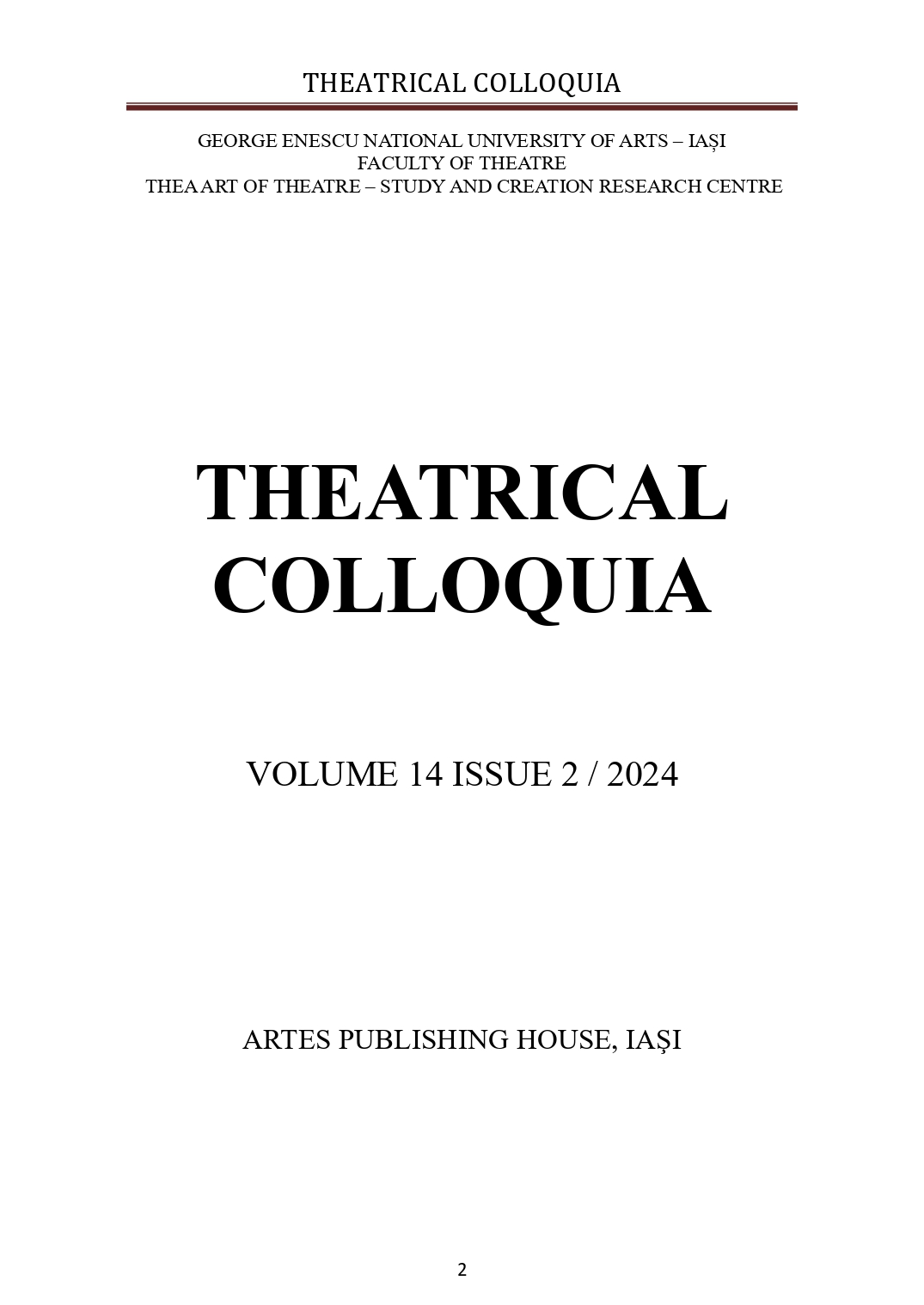
The choreographic parts in operetta performances must be adapted to the performer's artistic capacity and needs. In the case of singers, the dance steps and sequences come to complement the singing towards achieving an engaging expressive behaviour; the choreographic moments allow them to expand their performance beyond just vocal delivery, turning them into a more dynamic presence on stage – one that embodies both the music and the drama through movement. I have chosen to address the beginning of Emmerich Kalman's Sylva, which depicts the character's entrance for her final performance as a cabaret singer. It is a moment covered by Act I of the production staged at Brasov Opera House, in 2012, by director Anda Tăbăcaru Hogea, choreographed by Dorin Coşeriu and acted out by soprano Andreea Blidariu. The research method we use analyses the scenic behaviour of the performer embodying Emmerich Kalman's Sylva, followed by a biomechanical and aesthetic analysis of her interpretation. In order to create an effective choreographic moment in an operetta, the performer must posses advanced motor skills that allow them to accurately execute complex dance-specific movements. Choreography may be viewed as the fruit of the creative journey shared by the choreographer and the performers. Guided by the director's vision and shaped by their own personal expressions, they work together to develop movements and structures that align with the specific demands of the production towards achieving a flawless creative behaviour.
More...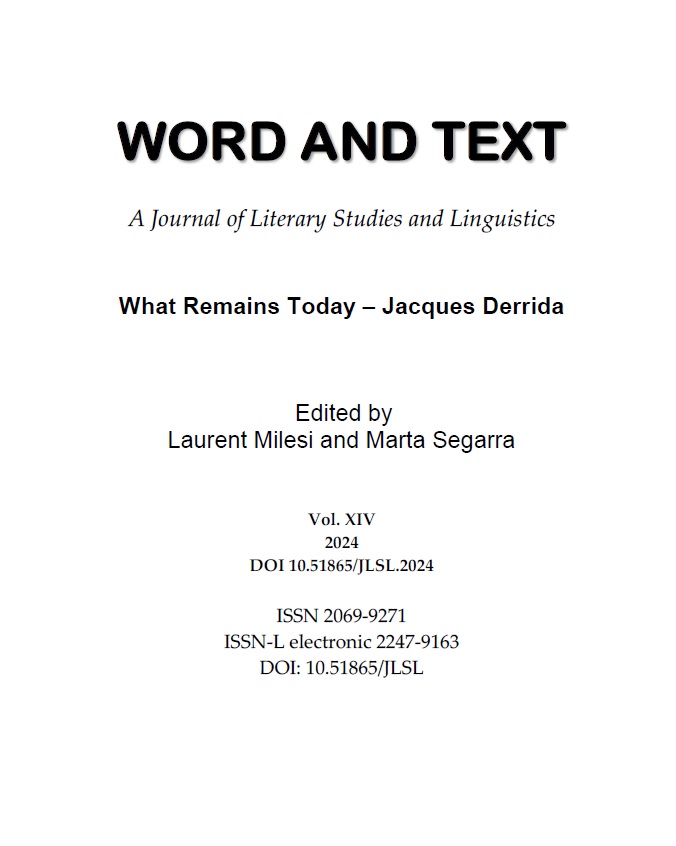
Derrida’s Le Parjure et le Pardon is heard as an offstage voice to the global mediatization of proceedings concerning genocide in the International Court of Justice in late 2023 and early 2024. Focusing on the Sixth Session of the first year, which remained unpublished until 2019 (2022 in English), the article follows Derrida in questioning whether a shared hearing or attunement is required for forgiveness and reconciliation. Far from absolving states from responsibility, Derrida’s insistence that any forgiveness and reconciliation worthy of the name exceed identificatory concord or reciprocity puts pressure on those with the most power to decide for peace before any accord to come.
More...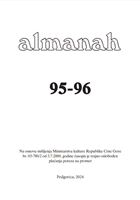
Rođen je 9. travnja 1947. u Šaronjama, Novi Pazar, gdje stječe osnovno i srednje obrazovanje. Petogodišnje sviranje violine ostavit će tragove i dilemu: glazba ili slikarstvo? Prevladat će slikarstvo s vječnom glazbenom podlogom. Školovanje nastavlja u Nikšiću gdje završava Višu pedagošku školu, likovni smjer. Zatim 1972. dolazi u Zagreb i upisuje slikarstvo na Akademiji likovnih umjetnosti gdje je 1977. diplomirao u klasi prof. Nikole Reisera. 1978 - 1979. dobiva stipendiju francuske vlade za specijalizaciju na L’École Superieure des Beaux Arts u Parizu u klasi prof. Jacquesa Lagrangea. Slijedećih deset godina živi u Parizu, Zagrebu i Londonu.
More...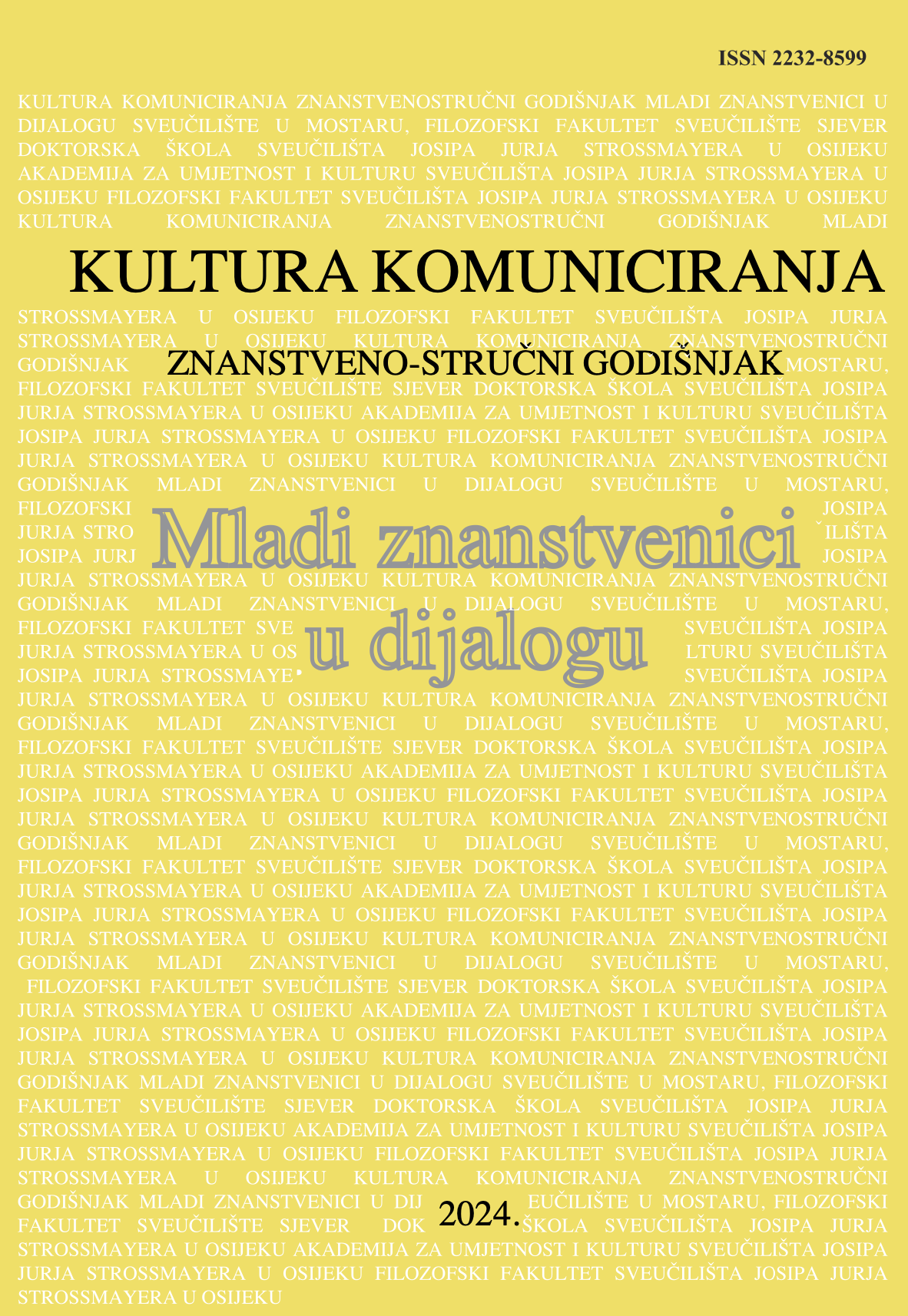
Previous research has shown that music therapy is extremely successful in working with the elderly and infirm persons as it contributes to their sense of community and acceptance. Nursing homes within Dubrovnik city area have recognized the health benefits of music therapy. The purpose of the paper is to investigate the challenges that music therapists face within institutions in relation to the recognition of the profession, financial and educational support, status issues and features as well as the quality of their competencies. Archival research methods, analysis, synthesis, and mapping is applied in this paper. Nine key challenges that members of this health profession face within their work were mapped through the analysis of the report on institutional music therapy for residents of nursing homes within the area of Dubrovnik during 2018 and 2019. In order to strengthen this supportive activity, it is necessary to invest a lot more effort, especially to ensure institutional and national support and qualified lifelong education of music therapists. It is necessary for the profession (medical, rehabilitation, music) to recognize music therapy as an independent method in working with various vulnerable groups. This paper tries to contribute to the establishment of music therapy and therapists in this sense, especially in working with the elderly and infirm persons
More...
The inventiveness and creativity in new media, along with the use of digital tools and platforms, have developed into an excessive consumption of audio-visual materials. Photography has also undergone a change, and the form itself, which captures and stores snippets of life, has become a medium available to every individual. All social-network users are becoming photographers, and the question of photographic quality and aesthetics is becoming more complex than ever before. The wide availability of photography at every moment of digital recording is in contrast to the artistic photography of the 1950s. This paper analyzes fine art photography from 1950 to 1960 through the lens of art photographer Erio Piccagliani on his photography subject – the opera singer Maria Callas. The focus of this research is the consumption of photos, which were created 60 years earlier, in the contemporary environment of digital platforms, and which have been processed and positioned in the new virtual reality of the three-dimensional creative industry. The aim of this paper is to analyze how fine-art photography finds its way to digital platforms and other contemporary forms of promotion yet retains the history of the time in which it was created as a record, and testifies to the full artistic quality of its creators and contributors. The methods used in this research are analysis and synthesis, the comparative method, proving- refuting method, and interview. The results of the research bring insight into the contemporary exploitation of fine-art photographs from the period under research, and how they still exist, express and depict the period in which they were created, competing with new digital forms of photography even today. The photograph finds its way to the digital media audience, which combines it into a visualization with a sound recording, in this case the voice of the legendary opera singer Maria Callas. The conclusion of the paper is that social networks have become the predominant media channels and mass channels of communication, with photography as the only real mediator between the audience, those who are embarking on and those who have completed their artistic and life journeys. Opera, like all other arts, can look for allies in the future and for new consumers in the photographs of art photographer Erio Piccagliani.
More...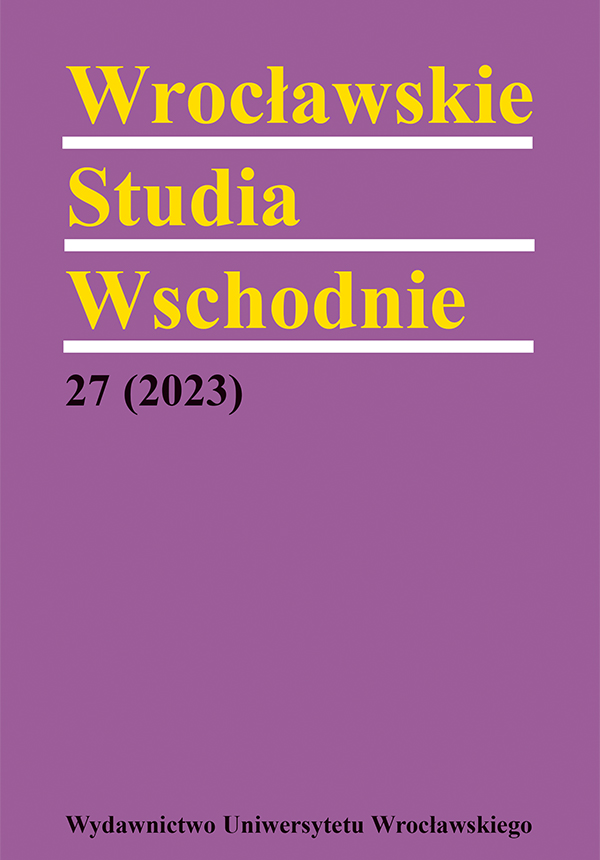
The article aims to examine the piece 4′33″ and its composer John Cage through the lensof some concepts developed in Zen Buddhism, a philosophy embraced by Cage himself. Thisapproach requires gesturing toward a broader context which can be generalised as ‘Easterninspirations,’ mainly meaning concepts and practices derived from Indian, Chinese andJapanese cultures and related to the Buddhist thought and its kin movements. The concept ofemptiness is an essential element of this cultural field. In some sense, Cage’s 4′33″ seems toemphatically express the meaning of this concept. Importantly, given what we know of Cage’sbiography, exploring his work through the lens of ‘Eastern inspirations’ appears to be a well-warranted approach and to afford opportunities for subtle transcultural reflection, which is alsopart of this article.
More...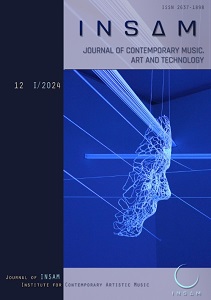
This paper explores the multifaceted role of Artificial Intelligence in the field of music, more specifically, examining the positives and negatives of generative and assistive capacities. Artificial Intelligence (AI) in music involves the application of computational techniques to various aspects of music creation, production and consumption. In the domain of assistive AI, the concentration is on how machine learning could potentially help musicians in the area of composition and performance to enhance their musical creativity. The paper will discuss an interesting collaborative effort between pure human creativity and computational assistance covering an explanation for a vast number of tools using generative as well as assistive artificial intelligence models. In addition, the paper will address the concerns facing the music industry while this technology keeps on improving, the potential drawbacks and ethical considerations. It opens the question of authenticity and emotional depth, and when or if this new technology could be able to replicate it. Further explanation in the paper will consider music examples with a focus on music styles assisted and generated by the use of artificial intelligence, from pop to classical music. With a thorough analysis of the aforementioned subject, the paper aims to provide a detailed perspective on the constant evolution of AI tools used in music with highlights on the need for a balanced approach. In providing a detailed perspective on the evolving landscape of AI tools in music, this study adopts a methodological approach that involves comprehensive analysis of both the benefits and challenges associated with these innovative gadgets. The paper contributes to the ongoing discussion on the intersection of technology and artistic expression. By examining the potential benefits and challenges with these innovative models, the paper signifies ongoing discourse on the impact of technology on artistic expression.
More...
The article reviews Jean Baudrillard’s concept of simulacrum and puts it in dialogue with the evolution of signal processing technologies for electric guitar, introducing the concept of metasimulacrum—a simulacrum of a simulacrum—to describe the historical trajectory from early electric guitar amplification to recent advances in digital signal processing, taking a critical stance on technological determinism.
More...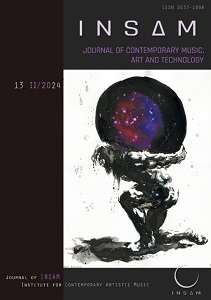
The platformification of music has led to a significant reorganisation of music culture with the rise of microsongs on short-form video platforms such as TikTok, YouTube Shorts, Facebook Stories, and Instagram Reels. This paper analyses the current state of microsongs on social media platforms, focusing on TikTok, and explores the challenges faced by musicians in navigating the digital reimagining of their art and the new aura this creates. The paper argues that the challenges facing the 21st century musicians whose work is based in the digital environment echo those faced by creators of newly mechanically reproduced art, as critiqued by Walter Benjamin. The symbiotic relationship between social media platforms and artists is examined, highlighting the benefits for musicians and songwriters, as well as the potential pitfalls of algorithmic based user direction. Data is gathered from a range of secondary sources and presents an analysis based on user behaviour and interaction with music content on TikTok. The findings suggest that while established artists and music production teams are best placed to overcome the challenges of platformification, the creation of microsongs remains a significant challenge for all musicians and their authenticity.
More...
Report on the 14th International Symposium “Music in Society”, Sarajevo, October 24–26, 2024.
More...
In the midst of an increasingly globally unstable socio-political environment, and the many (bureaucratic) challenges faced by the music community, The Society of New Music – SONEMUS is expanding its activities with a relentless dedication to presenting the new sound experiences guided by the belief that art remains one of the few areas of human activity where genuine communication and the pursuit of truth are still ideals worth striving for.
More...